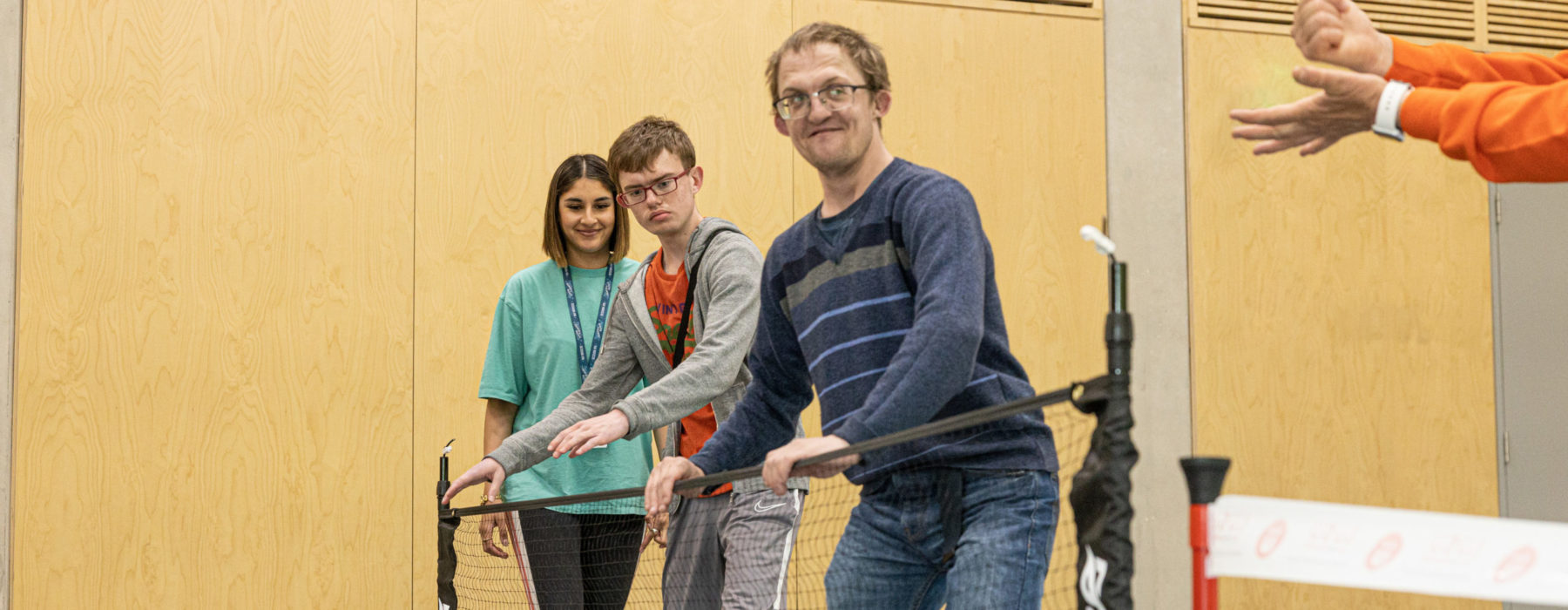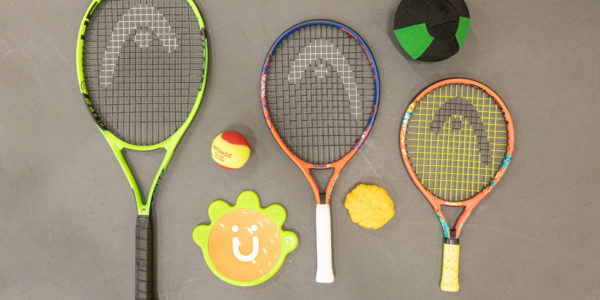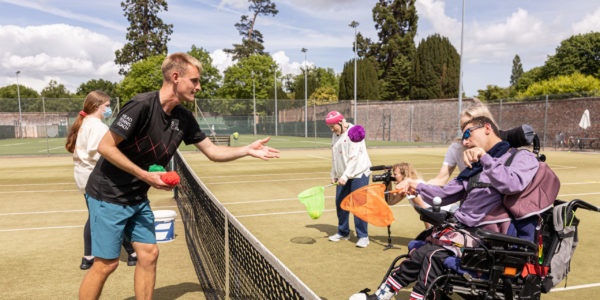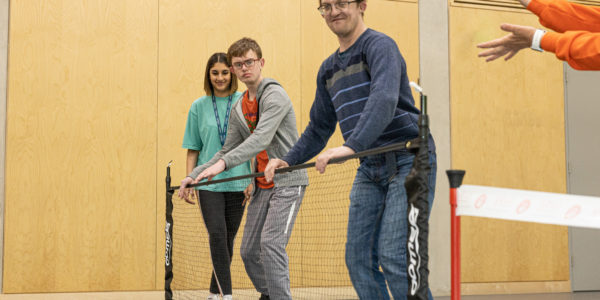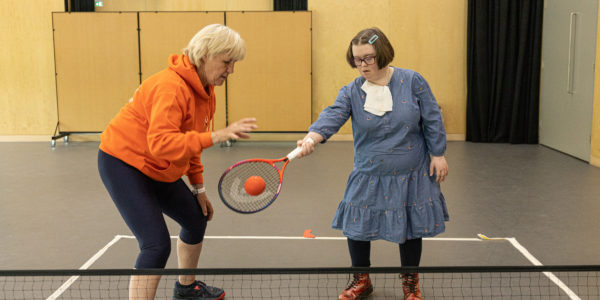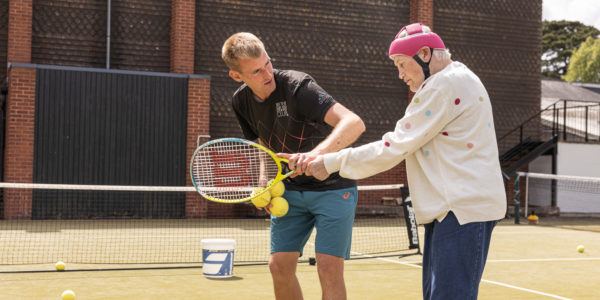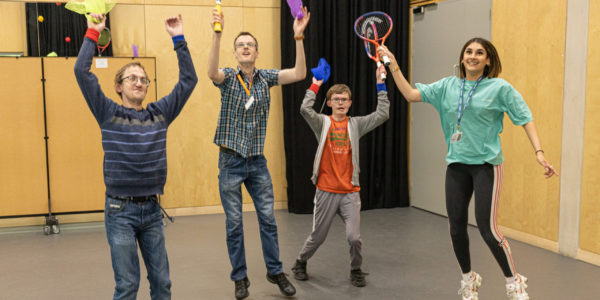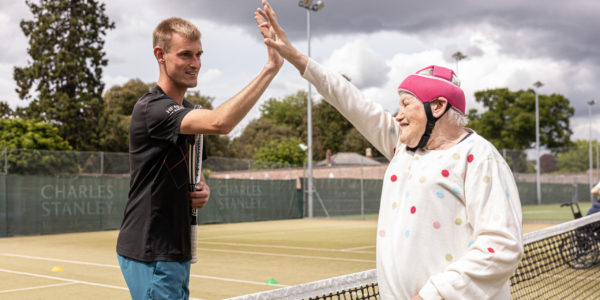Warming up and getting started
Get in touch
Contact [email protected] if you’d like further support, or if you’d like us to send you a free physical copy of this resource. We’d also love to hear about how your sensory tennis sessions are going!
Coin Toss
Aims
- To signal the start of the sensory tennis session.
- To prepare the participants mentally for the activity they are about to do.
Outcomes
- Independence
- Exploration
- Health and fitness
Create your Coin Toss
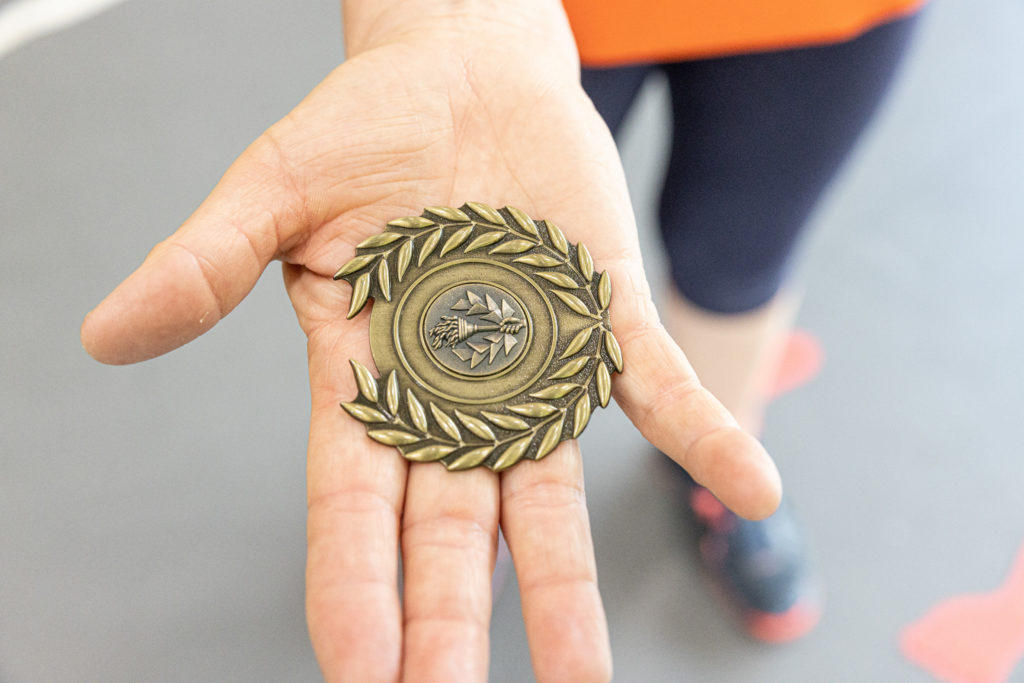
Create something which represents the start of the tennis session. This could be a sound, colour, texture, movement or gesture, which participants understand to mean “we are ready to begin”. Come up with something which is meaningful for everyone in the group.
Examples:
- A BSL sign for “go”.
- A green cone.
- Waving a tennis racket.
- Feeling and flipping a coin.
Top tips
- Whatever you choose, it’s important that it holds meaning and is understood by the participants.
- This should be repeated at the same point every week, in order to help participants recall what activity they are about to take part in, and prepare them for this activity.
Warm Up activities
Aims
- Getting used to the surroundings.
- Getting used to working together as a group.
- Raising the pulse.
- Preparing for the activities to come.
Outcomes
- Independence.
- Exploration.
- Spatial and body awareness.
- Communication skills.
Mapping space and equipment
- Move around the environment, feeling the outline or the perimeter of the space. This could include the walls, flooring or a net.
- Pick up pieces of equipment and explore their shape, size and texture.
Make it easier:
- Provide more support, guidance and direction to the participant when moving around and exploring the space.
- Suggest pieces of equipment for the participant to explore, and support them to feel and squeeze each item.
- Spend longer exploring one piece of equipment in more detail.
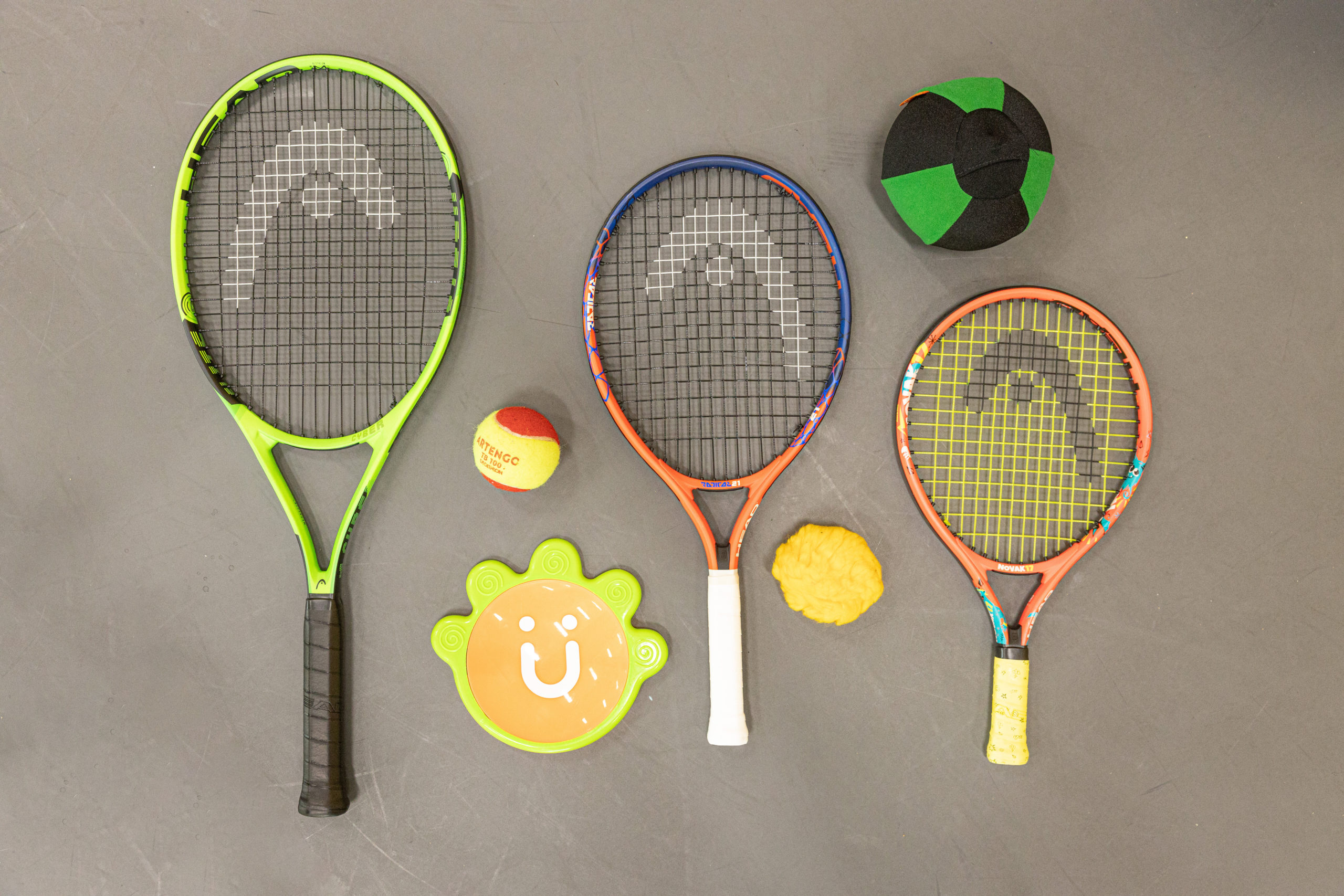
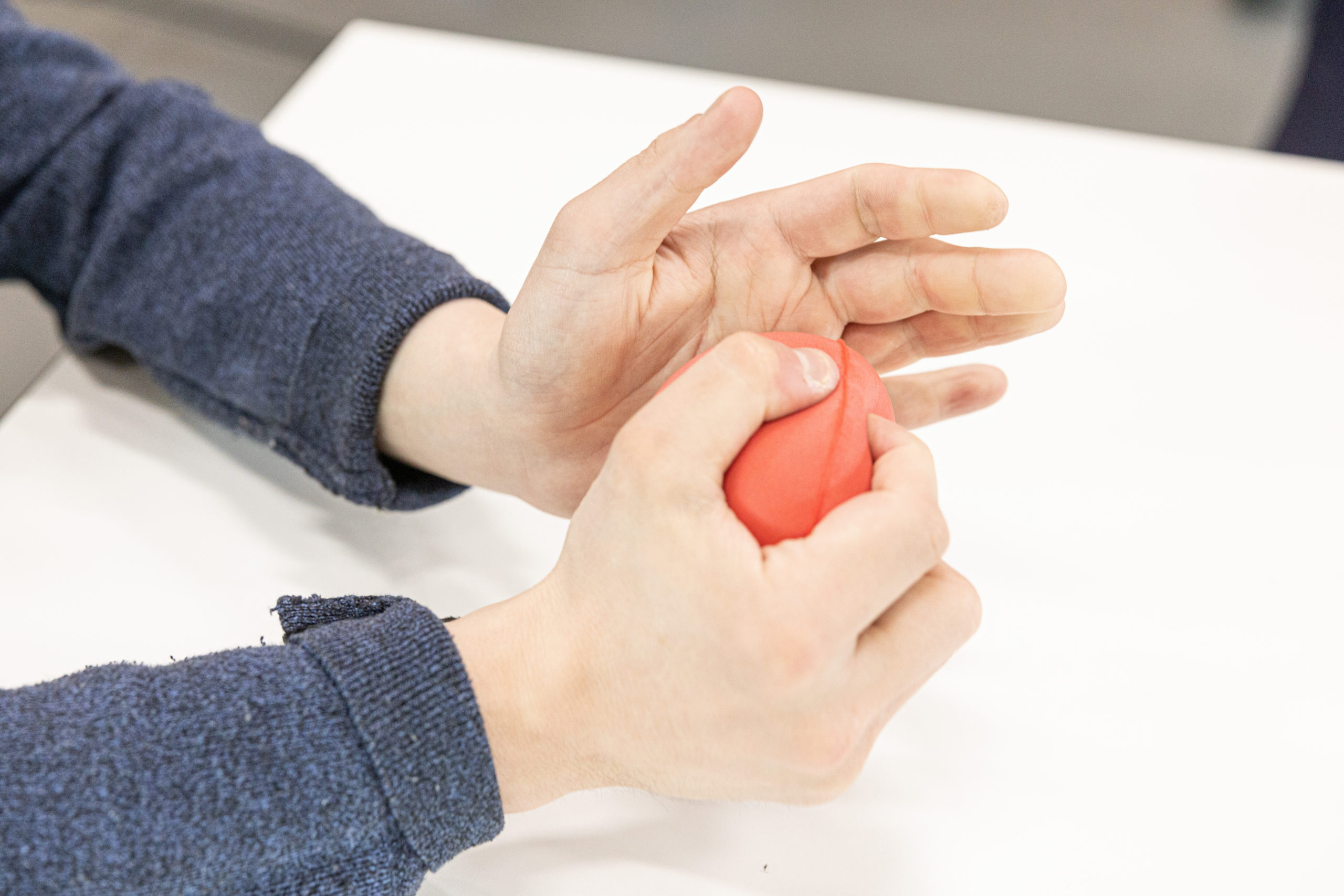
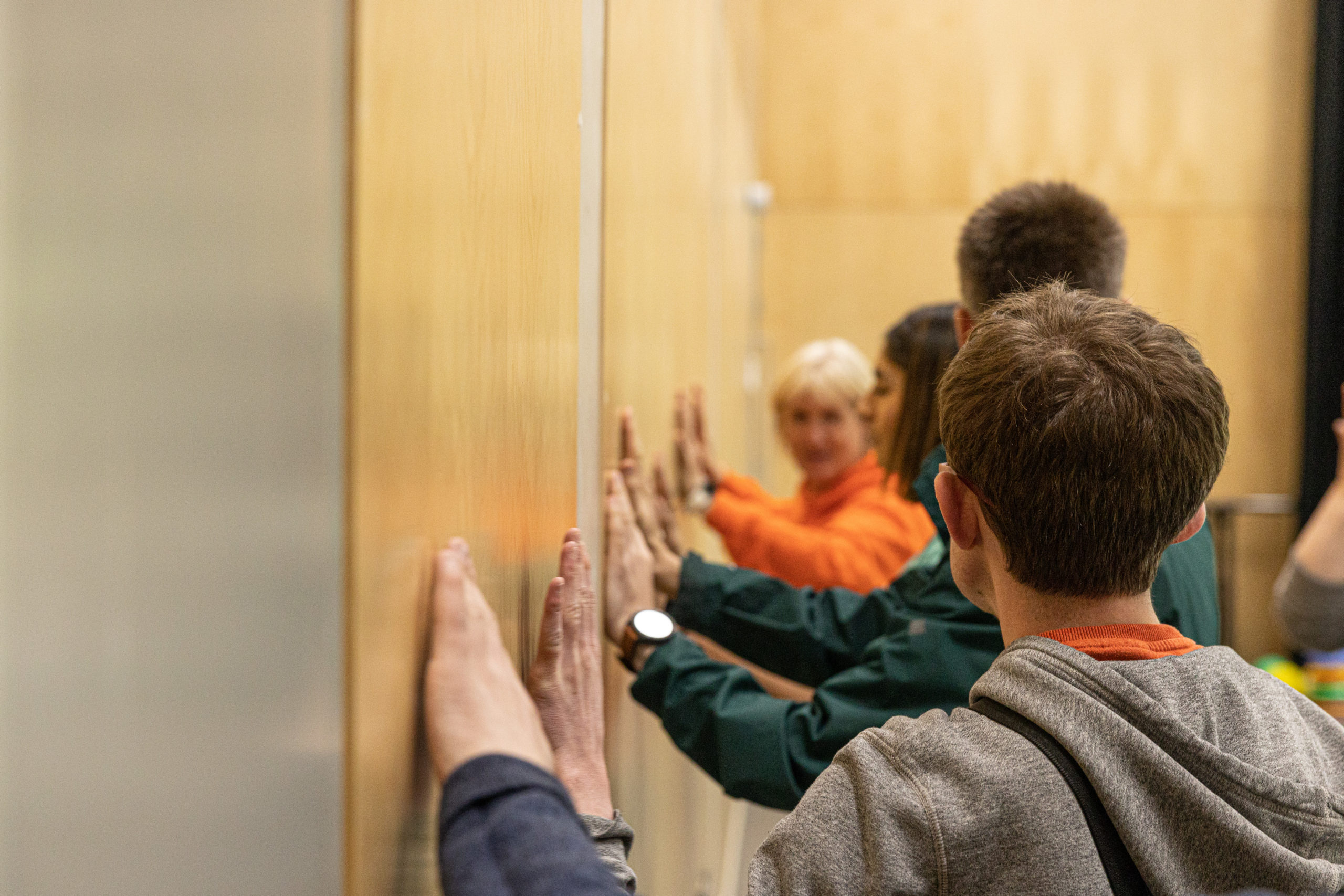
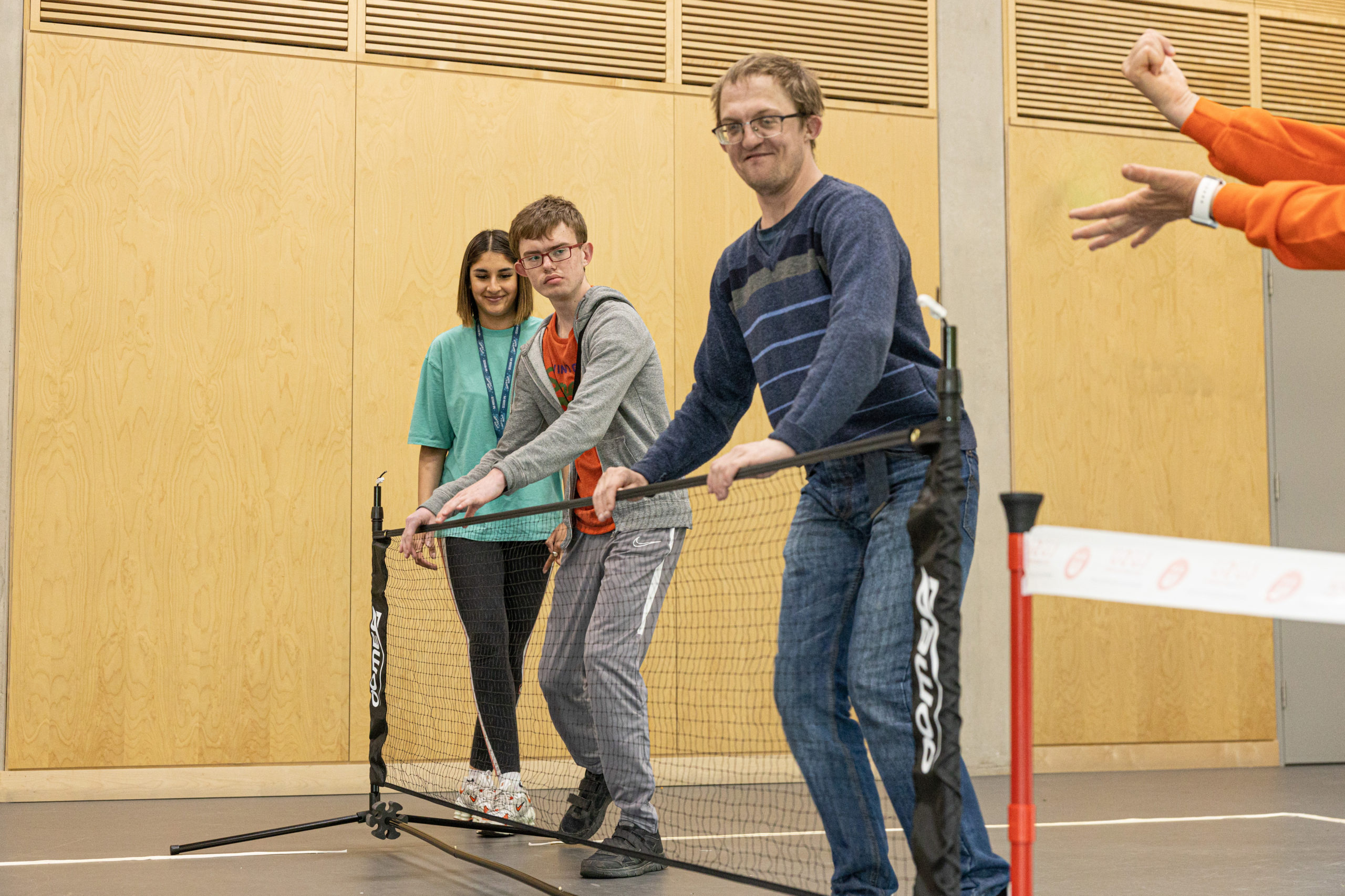
Make it harder:
- Encourage the participant to explore the environment more independently.
- Try exploring new, different pieces of equipment.
- Encourage the participant to interact with a number of different balls in a specific amount of time. Can the participant notice how they differ in shape, size, weight and texture?
Nylon squares
- Work with a partner using a dish cloth or nylon square.
- Partner pulls the cloth through one of the participant’s hands as they try to grip it.
- Try both hands.
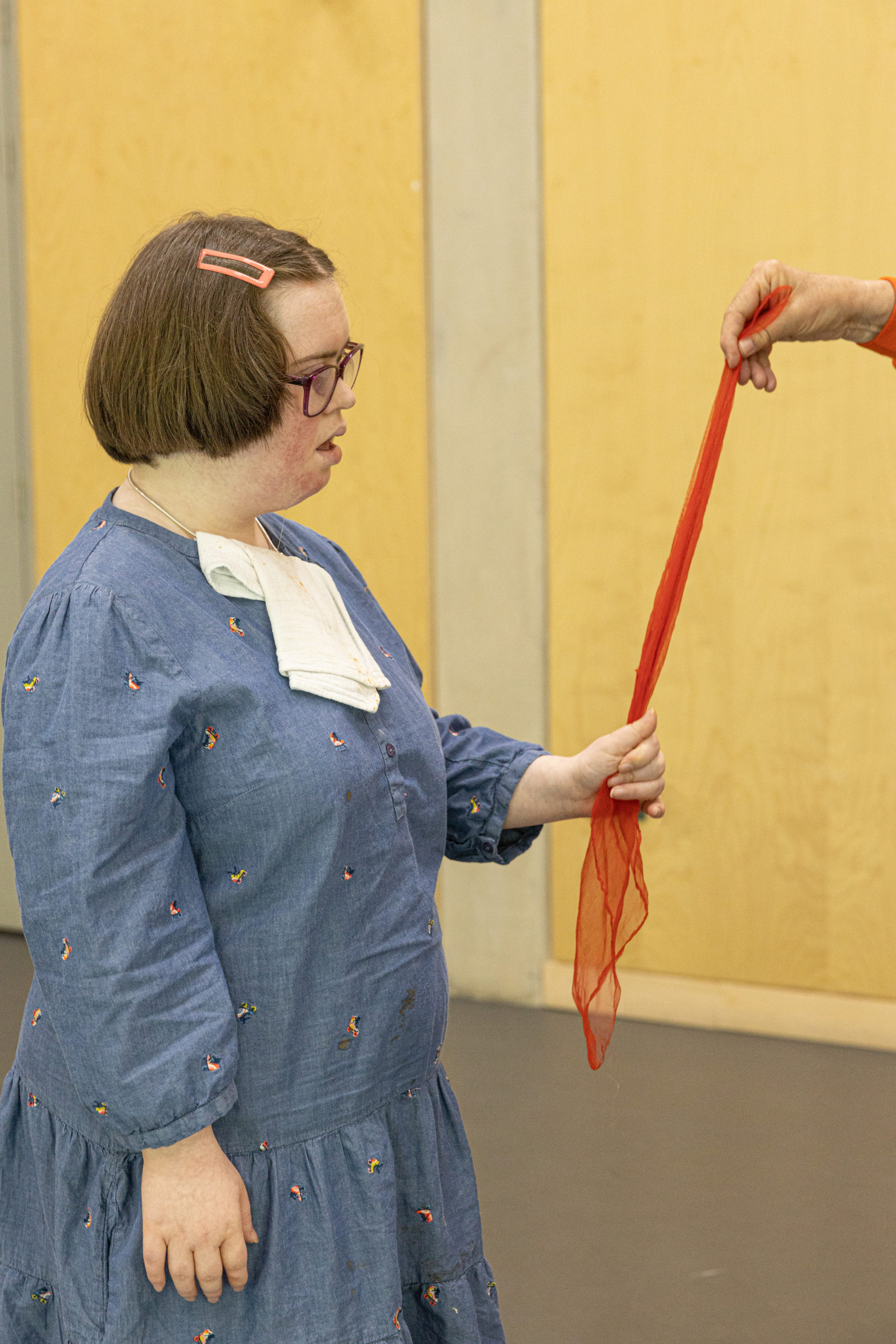
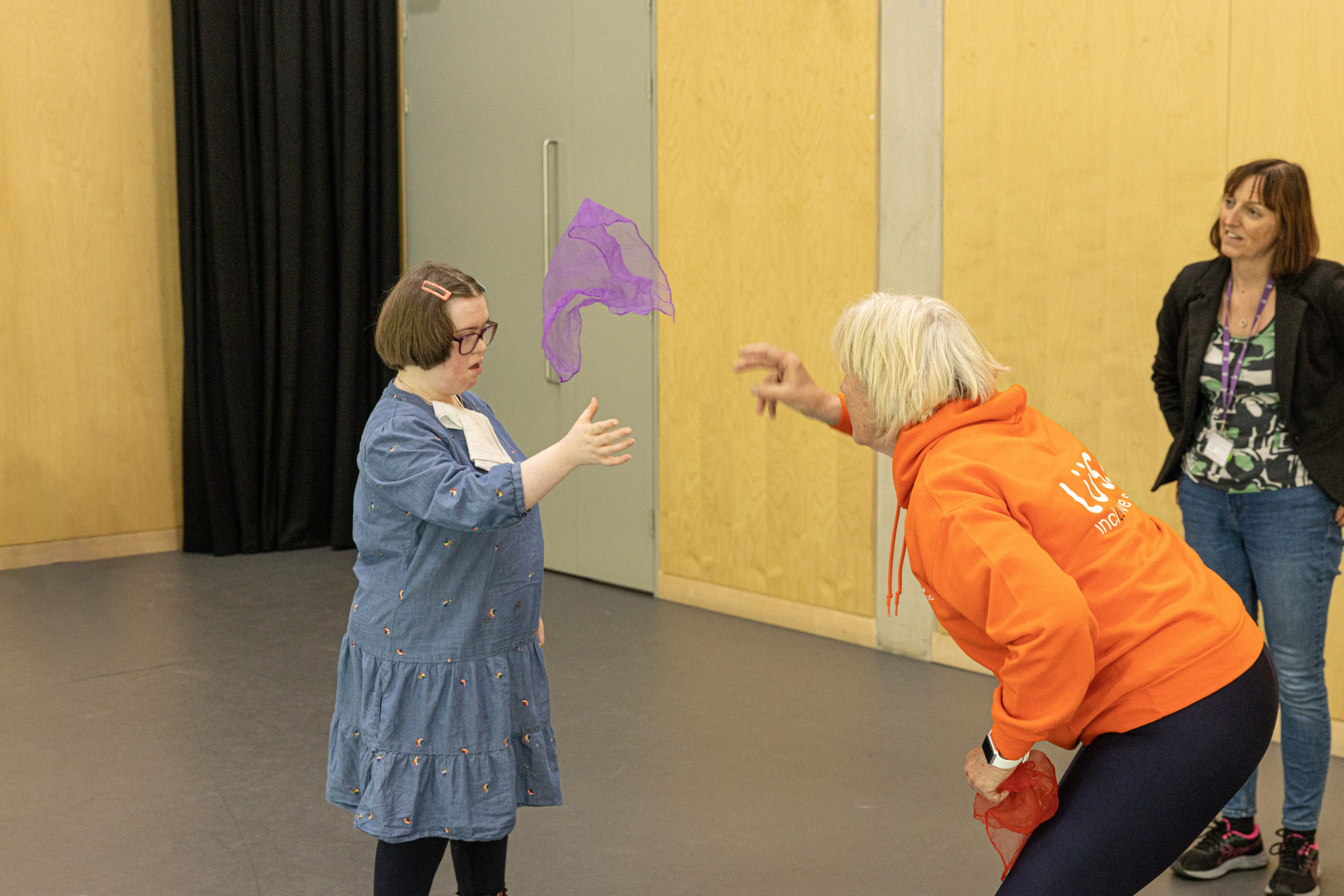
Make it easier:
- Start with the cloth/nylon square in the participants’ hand.
- Use a larger piece of equipment that it is easier to grip.
Make it harder:
- Throw the cloth or nylon square into the air for the participant to try to catch.
- Try throwing and catching from different heights or distances.
- In a space, throw the cloth or nylon square into the air so the participant has to move to catch it.
Side to side
- Place two cones a metre apart on the floor or on a tabletop. The participant positions themselves in the middle.
- The participant reaches out to the two cones, tapping each cone using right and left hands.
- Try to alternate between cones.
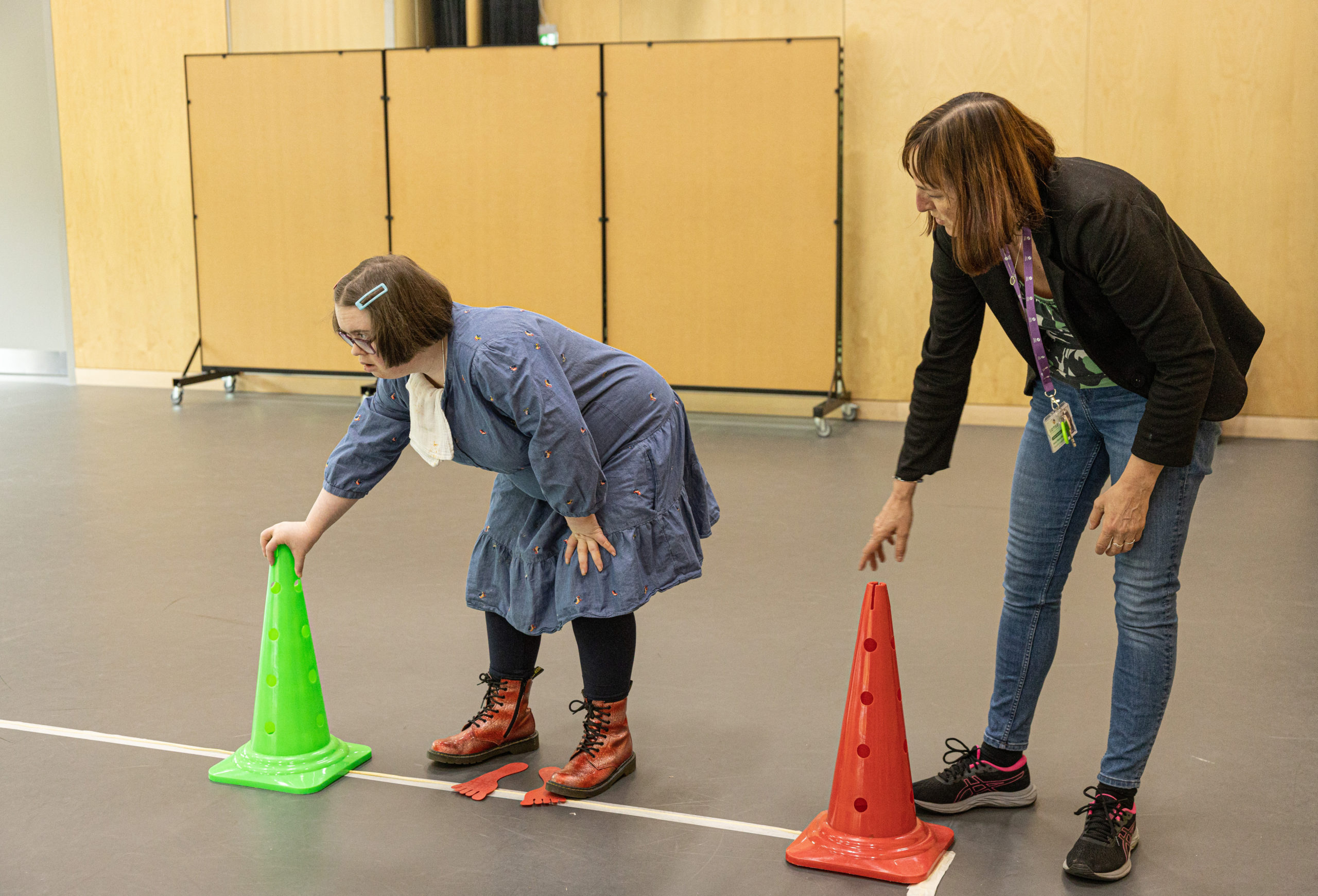
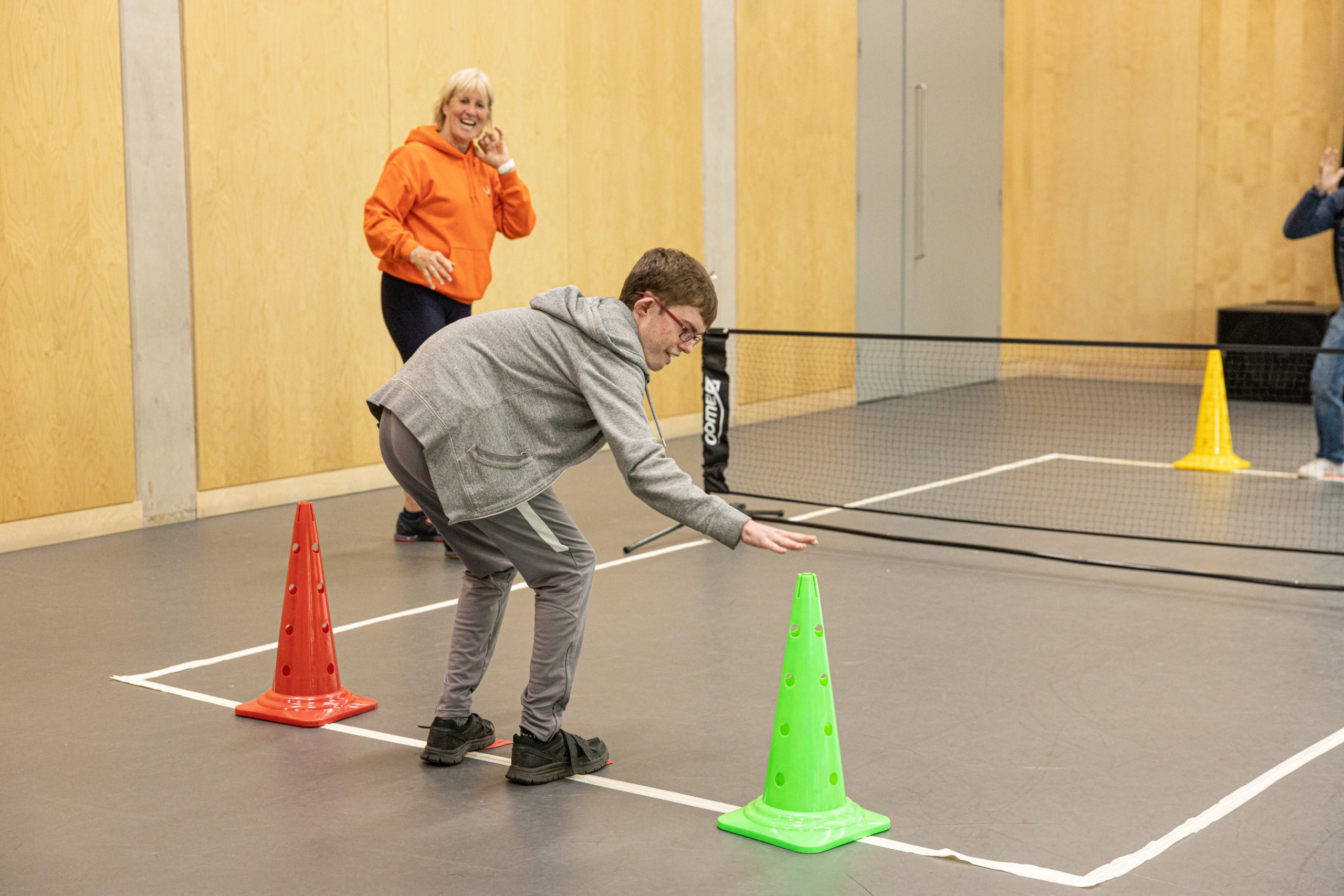
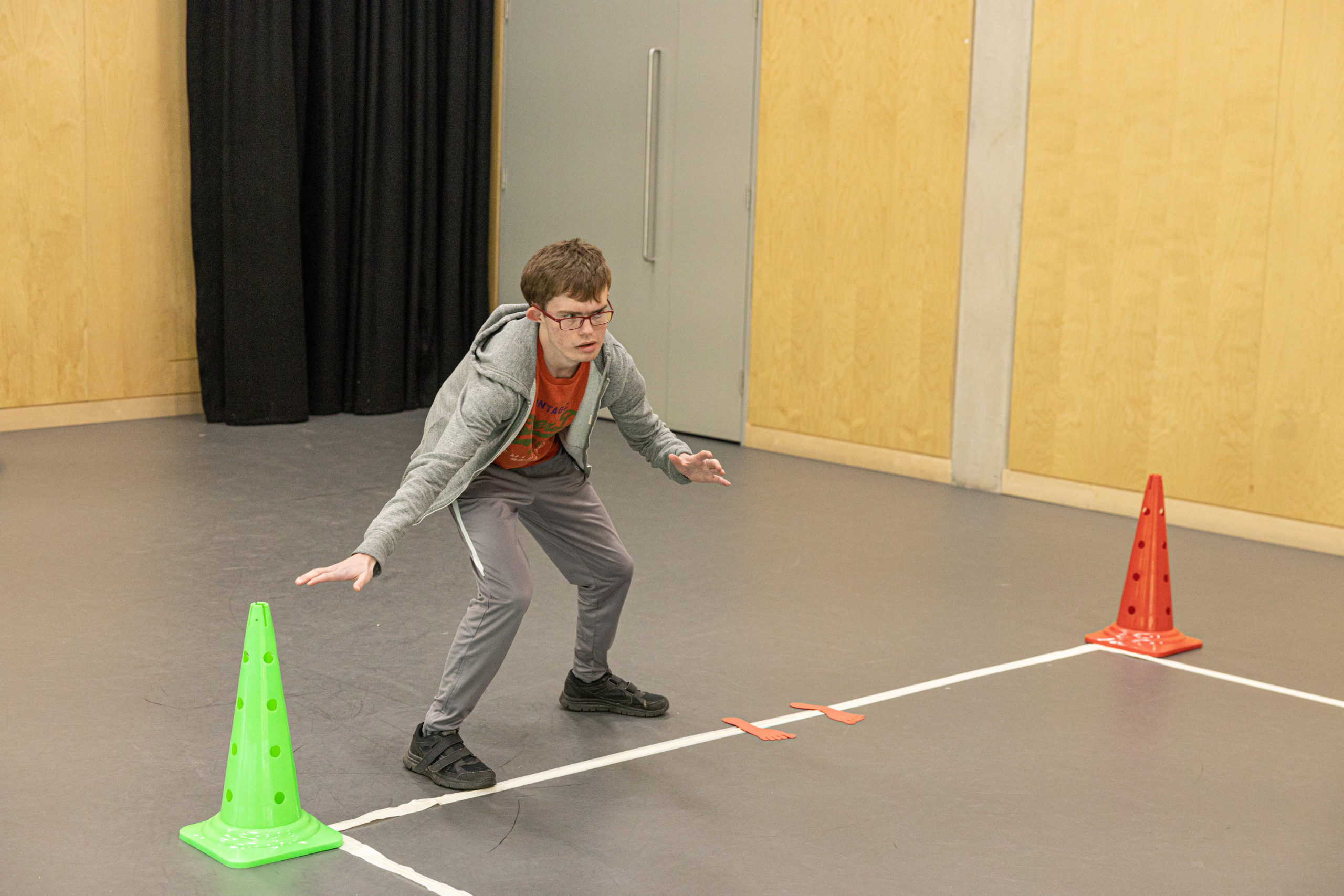
Make it easier:
- Provide more support, guidance and direction to the participant.
- Move the cone towards the participant.
Make it harder:
- Move the cones further apart so the participant must move towards them.
- Encourage the participant to clap their hands after each tap to simulate the ‘ready’ position that players take between shots.

